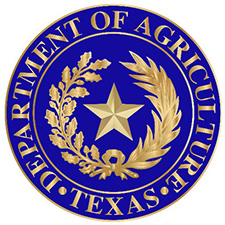Perdue and lawmakers compete in USDA relocation race
Agriculture Secretary Sonny Perdue fired the starting gun for a sprint to move two USDA science agencies to Kansas City before opponents in Congress can stop him. In seven weeks, or possibly sooner, the first of the relocated employees are to report to work in their new offices, according to a USDA timeline, with the remaining 447 of them to be in place by Sept. 30.
TODAY’S QUICK HITS
Bayer tries new approach to weeds (Wall Street Journal): Bayer will invest over $5 billion in the next 10 years to develop new ways to fight weeds, attempting to win back trust after a slew of lawsuits alleging that Monsanto’s Roundup herbicide causes cancer.
Climate change by another name (Iowa Public Radio): Rural communities may not use the words “climate change,” but they’re discussing its effects and want to see polluters taxed for their contributions to a changing climate.
EU to give U.S. a larger slice of beef market (Reuters): Over time, the EU will give the United States a 35,000-tonne share of its import quota, now 45,000 tonnes, for beef produced without artificial growth hormones, said EU sources; at present the U.S. share is around 30 percent.
Railroaded out of farmland (Los Angeles Times): Farmers in the San Joaquin Valley lost cropland through court-issued orders of possession to make room for California’s proposed bullet train.
Nation’s largest hemp research center (OSU): Oregon State University, with 40 faculty members already engaged in hemp research and teaching, said it would open the nation’s largest research center devoted to the study of industrial hemp.
Larkin elected to lead ag policy institute (Farm Foundation): Larkin Martin, chief executive of Martin Farm in Alabama was elected to a two-year term as president of the Farm Foundation, which describes itself as a agricultural policy institute.
ON THE USDA CALENDAR
Monday
– Deputy Agriculture Secretary Steve Censky participates in a roundtable of regional agriculture and healthcare issues, 2 p.m. CT, and takes part in a panel at the Minnesota Rural Health Conference, 3:15 p.m. ET, Duluth, Minnesota.
– Final day of Kansas City Federal Reserve Bank’s annual agricultural symposium, with the theme, “Exploring agriculture’s path to the long-term,” Kansas City.
– USDA releases Livestock, Dairy and Poultry Outlook, noon ET.
– USDA releases monthly Sugar and Sweeteners Outlook, 3 p.m. ET.
– USDA releases weekly Crop Progress report, 4 p.m. ET.
Tuesday
– The House may begin debate today on HR 3055, a “minibus” with funding for fiscal 2020 for USDA, FDA and several federal departments, with hopes of passage this week, 2 p.m. ET.
– U.S. trade representative Robert Lighthizer is lead witness at Senate Finance Committee hearing, “The president’s 2019 trade policy agenda and the United States-Mexico-Canada Agreement,” 10:15 a.m. ET, 215 Dirksen.
– Senate Energy and Natural Resources Committee hearing to “to examine deferred maintenance needs and potential solutions on federal lands administered by the Department of the Interior and the USDA Forest Service,” 9:30 a.m. ET, 366 Dirksen. Witnesses include Associate Chief J. Lenise Lago of the Forest Service and Scott Cameron, principal deputy assistant secretary for policy of the Interior Department.
– Deputy Agriculture Secretary Steve Censky participates in roundtable with Minnesota agriculture industry leaders, 2 p.m. CT, Saint Paul.
– USDA releases Non-citrus Fruits and Nuts Annual report, 3 p.m. ET.
Wednesday
– Indoor AgTech Innovation Summit, through Thursday, New York.
Thursday
– Prime Minister Justin Trudeau of Canada meets President Trump at the White House. The leaders will discuss the United States-Mexico-Canada Agreement and other “shared economic interests of their countries,” bilateral cooperation and the upcoming G20 summit in Japan, says the White House.
– House Agriculture subcommittee hearing, “How farm policy helps farmers in adverse conditions,” 10 a.m. ET, 1300 Longworth.
– House Agriculture subcommittee hearing, “The potential implications of eliminating broad-based categorical eligibility for SNAP households,” 2 p.m. ET, 1300 Longworth.
Friday
– First day of summer in the northern hemisphere, when the sun reaches its highest and northernmost point in the sky. The Old Farmers Almanac says the date of the solstice varies from June 20-22, because of the difference between the time needed for the earth to orbit the sun (365.25 days) and the Gregorian calendar, which divides the year into 365 days with a leap year every fourth year, making “the date for summer jump backward. However, the date also changes because of other influences, such as the gravitational pull from the Moon and planets, as well as the slight wobble in Earth’s rotation.”
– USDA releases monthly Cattle on Feed and Cold Storage reports, 3 p.m. ET.











